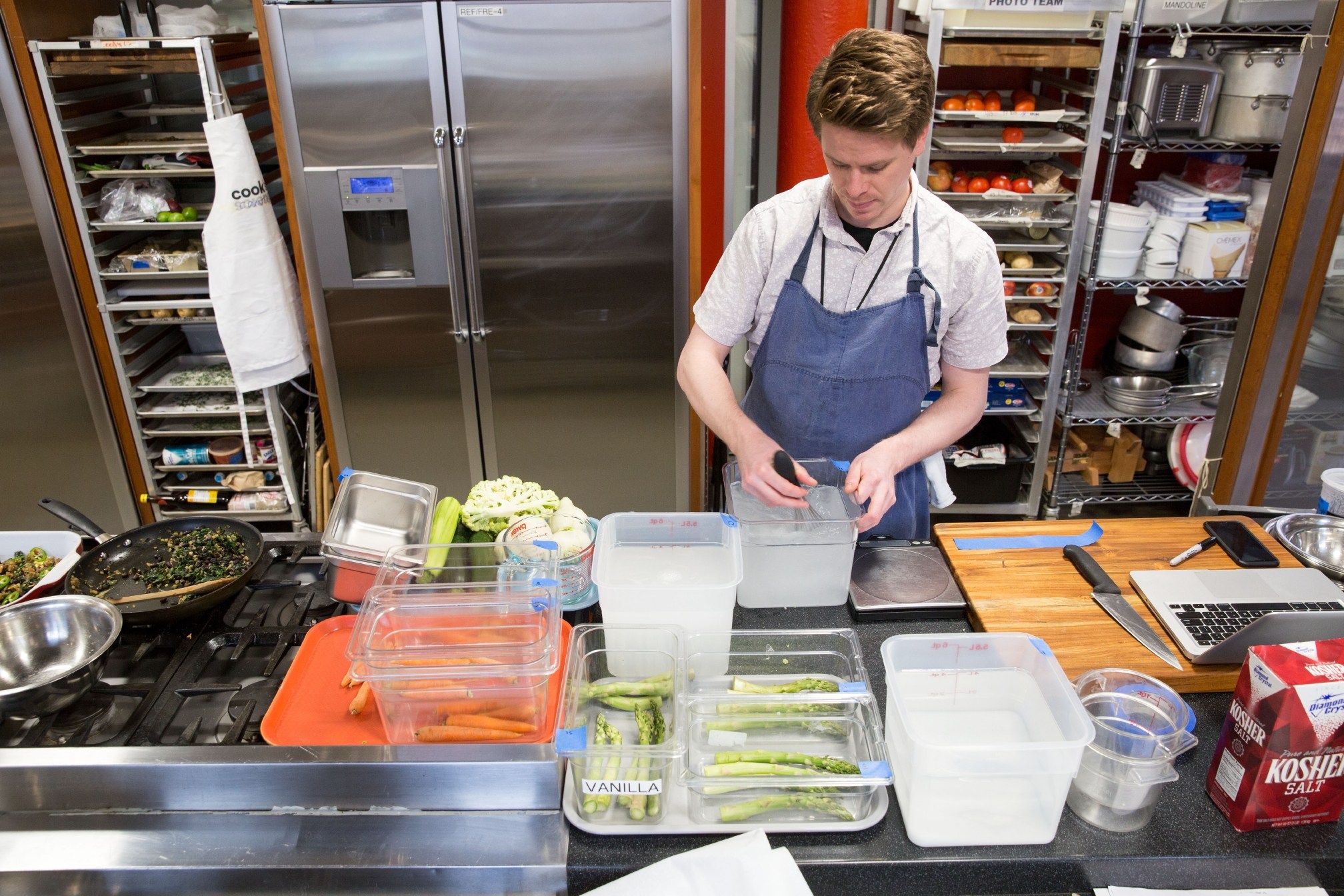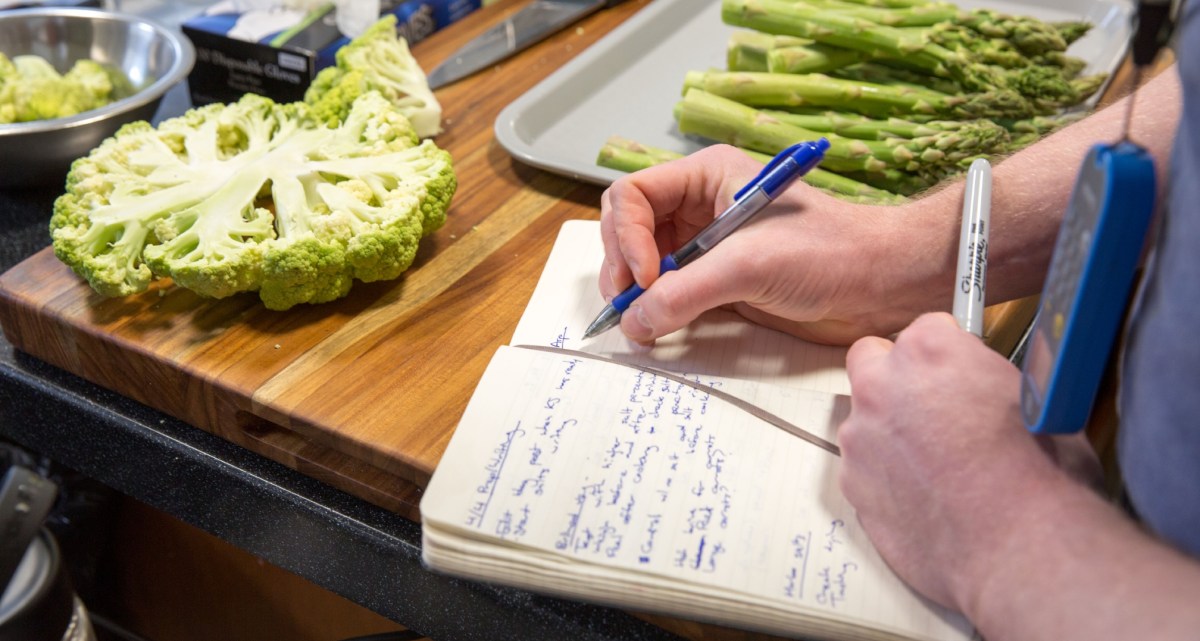In this weekly series, associate editor Tim Chin and test cook Sasha Marx take you behind the scenes of Cook’s Science and give you a glimpse into our recipe development process, from how we come up with recipe ideas, to test kitchen failures, to discoveries we make along the way. This week, Sasha shares his thoughts on grilling vegetables (and he has a few).
As Tim mentioned in last week’s post, our team has been focusing on salt for an upcoming feature story going live next week. In particular, we’ve been exploring how brining affects the flavor and texture of different foods.
My recent Fermented Beets and Beet Kvass recipe brines beets for a long time (at least a week). For this latest set of recipes, I was interested in shortening the brining time, so that, rather than allowing the vegetables to ferment, they’re treated in the same way that I would quick-brined meat or fish—well-seasoned with firm-yet-tender texture. In terms of cooking technique, with warmer weather finally making an appearance in Boston, grilling has been on my mind. I’ve always loved grilled vegetables, but it seems as though they usually end up an afterthought at summer cookouts; the ubiquitous platter of overcooked and underseasoned asparagus, bell peppers, zucchini, and portobello mushrooms, often skewered on those metal kebabs. I get it. Properly cooking vegetables on a hot grill is harder than it looks, especially when you’ve got burgers, sausages, and steaks going too. But it can be done.
First off, ditch the kebabs. Vegetables aren’t all the same and they don’t cook at the same rate. You wouldn’t stick chicken and steak on the same skewer, toss them on the grill and expect them to be perfectly cooked at the same time. Why should vegetables be any different?
Next, cook your veg less. A lot of produce tastes great raw, right? Grilling vegetables should be about enhancing their natural flavor with some of that delicious, smoky, charred goodness, not turning them into overcooked, limp-yet-somehow burnt, unrecognizable versions of themselves. Grilled vegetables can still have crunch, if you get them on and off the grill fast enough. Carryover cooking, where a food continues to cook with residual heat after it has been removed from the heat source, applies to vegetables as well as meat and poultry. Asparagus that looks perfect on the grill may be overcooked after sitting a few minutes off the grill. And nobody should be subjected to sad, limp grilled asparagus.
Fat and seasoning can be your friend. (In moderation, please. Vegetables don’t need to get doused with the Italian antipasto treatment every time.) A light coating of oil helps salt adhere to, rather than bounce off of, the surface of vegetables, but it also imparts flavor and changes the texture of the vegetables as they hang out on the grill, giving vegetables like carrots and asparagus that too-long-in-the-pool pruny skin. Not necessarily a bad thing, but coating them with oil and salt isn’t the only way to go about grilling vegetables. I’ve been experimenting with quickly brining vegetables, like you would chicken or fish, before giving them a quick cook on the grill. Just 45 minutes in a cold saltwater brine produces vegetables that are seasoned beyond just the exterior—they taste more like the best version of themselves.

The salt in the brine does more than just season the veggies. It also begins to break down plant cell walls and tenderize the vegetables, meaning they’re on and off the grill even faster, giving them nice surface char without sacrificing the crunchy, snappy texture so prized in fresh spring and summer produce. Needless to say, I’m pretty psyched for grilling season. I hope you are, too.
What are your favorite vegetables to grill? Got any brining thoughts or questions? Feeling salty? Let us know in the comments section!
(Editor’s Note: Be sure to check back next week on Cook’s Science to get Sasha’s brined and grilled vegetable recipes.)
Photography by Steve Klise.




